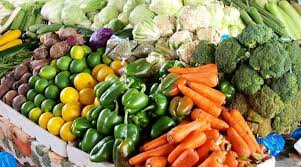Transportation systems are important in the transportation of crop produce (moving fresh produce) from production areas to distribution points. Transportation facilitates the rapid movement of fresh produce within the horticultural supply chain.
Fresh produce must be properly protected during transportation in order to minimize mechanical damage, temperature abuse, taint and contamination by food- borne pathogens.
It is the responsibility of the transport provider to ensure that the transport vehicle is well maintained and is in a hygienic condition.
The quality of perishable produce can be adversely affected by a lack of standard hygiene in transportation.
Transportation of Crop Produce
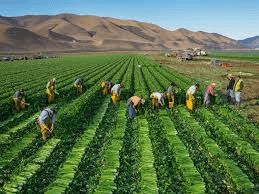
Transportation facilitates the rapid movement of fresh produce within the horticultural supply chain. Fresh produce must be properly protected during transportation in order to minimize mechanical damage, temperature abuse, taint and contamination by food-borne pathogens.
It is the responsibility of the transport provider to ensure that the transport vehicle is well maintained and is in a hygienic condition.
Factors that May Compromise Quality during Transportation
1. Mechanical Damage
Mechanical damage of fresh produce results in tissue darkening or colour changes on the skin of the commodity and markedly affects its nutritional and sensory quality, i.e. its taste, texture, appearance and flavour.
Mechanical damage can also lead to moisture loss, pathogen invasion and can stimulate the production of ethylene, which triggers the senescence process in horticultural crops such as apples, papayas and tomatoes.
Types of Mechanical Damage that Occur During Transportation
Impact damage occurs due to:
Collision between produce items or between produce and hard surfaces;
Rapid acceleration or deceleration, e.g. when fruits are dropped; or
Exertion or removal of forces (such as impact, compression, vibration and abrasion) within a short time (duration impact).
Read Also : Loading Patterns in Fresh Farm Produce Transport Systems to Minimize Overheating
Impact damage can result in bruising with or without skin injury.
Compression damage occurs when produce is subjected to heavy commodity weight, with or without physical movement, as occurs when containers are of inappropriate depth, over-packed, packed in containers of poor structural integrity, improperly packed or stacked too high;
Generally results in distortion cracks and splits;
Is usually caused by package failure; and
Is also caused by stacking or sitting on top of produce.
Abrasion damage occurs when the surfaces of produce slide across another surface causing friction;
Can result in removal of the cuticle and wax layers of produce; and
Can be minimized with the use of lining or padding materials, such as paper or sleeves to protect the produce.
Vibration damage: The level of vibration of a moving vehicle is greatly influenced by the nature of the road and the suspension system of that vehicle.
Vibration occurs when produce moves repeatedly for prolonged periods within a container during transport. Vibration can result in damage due to compression, impact and abrasion.
Vibration damage can be prevented, or limited, by the following practices:
Use plastic crates for transportation – vibration damage is less with plastic crates than with cartons since plastic crates absorb and dissipate the force, thereby keeping the effects of vibration within the crate.
Use rigid containers to limit the movement of the base of the container in the transport vehicle.
Use a vehicle with a firm suspension system.
Use radial tires, which absorb more impact than other types for road transport.
Minimizing Mechanical Damage
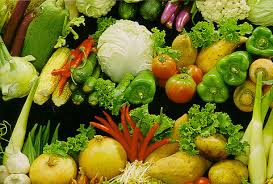
Mechanical damage can be minimized through the use of packaging that can withstand:
Rough handling during loading and unloading;
Compression from the overhead weight of other containers;
Impact and vibration during transportation; and
High humidity during pre-cooling, transit and storage.
2. Over heating
Overheating occurs as a result of external sources (such as the sun, heat from the road, the walls of the vehicle etc.) as well as from heat generated by the produce within the transport vehicle.
Overheating causes natural breakdown and decay and increases the rate of water loss from the produce. Overheating can, therefore, result in overall quality loss.
Factors that contribute to overheating include:
Heat generated by the produce due to respiration;
Lack of ventilation, as occurs in closed vehicles;
Restricted movement of air between and through packages;
Lack of adequate ventilation in packaging; and
Exposure of packaged produce to the sun while waiting to be transported or unloaded.
Overheating can be avoided by:
Use of well-ventilated vehicles;
Proper stacking to allow for the disposal of heat;
Use of well-ventilated packaging;
Avoidance of exposure to the sun on loading and off-loading tarmacs; and
Travelling early in the morning or at night if non-refrigerated transport is used.
Loading Patterns in Transport Systems to Minimize Overheating
Stacking patterns in transport vehicles should minimize contact between the produce and the floor and wall surfaces of the vehicle to reduce the transmission of heat from the outside of the vehicle into the loaded produce. Centre-loading leaves an insulating air space between the load and the outside walls of the vehicle.
Produce transported in cartons should be stacked to allow adequate air circulation throughout the load. The industry norm is to load palletized fruit, i.e. fruit in cartons placed on a pallet.
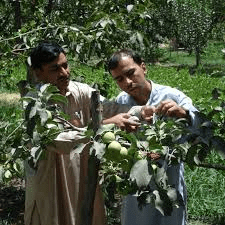
Read Also: Transportation of Crop produce and Factors that may Compromise Quality during Transportation
Palletization makes loading easier and more cost effective than loading loose cartons into the container. Palletizing is usually done after other pre-cooling methods, but before forced air- cooling. Pallets must, however, be properly secured by strapping, corner bracing or net wrapping.
3. Build-up of Gases in the Transport System
Inadequate air circulation during the transportation of fresh produce can lead to the buildup of ethylene or carbon dioxide. Care must therefore be taken to assure proper ventilation within the transportation vehicle in order to avoid gas build up.
4. Transportation of Mixed Loads
Mixed loads can be of serious concern when temperature optima are not compatible or when ethylene-producing commodities and ethylene-sensitive commodities are transported together.
Wet and dry produce items must be transported in separate mixed loads in order to avoid the transfer of contamination from wet to dry produce.
5. Hygiene in Transport Systems
The quality of perishable produce can be adversely affected by a lack of standard hygiene in transportation systems. Soil, typically found in a field, can encrust the floor area of the transport system.
In order to prevent contamination by food-borne pathogens, transport systems should make use of good sanitation practices, ensure proper temperature and humidity management and minimize potential damage to the produce.
It is critical that all vehicles used for transportation of food products are cleaned and washed routinely to remove decaying remains of agricultural produce. Water, used for washing, must be safe and clean.
If pallets are cleaned by fumigation, only recommended/permitted fumigants or chemicals must be used and such use must be according to the manufacturers recommendations.
Factors that Govern the Selection of the Mode of Transportation
The mode of transportation is influenced by:
The destination of the produce;
The value of the produce;
The degree of perishability;
The volume of produce to be transported;
Recommended storage temperature and relative humidity conditions for the load;
Ambient temperature conditions at origin and destination points;
Time in transit to reach the destination by air, land or sea transport;
Road access;
Freight rates;
Quality of the transportation service.
Transport Equipment
Equipment used for the transport of fresh produce include:
Refrigerated and non-refrigerated vehicles – for highway transport;
Containers for air, rail and highway transport, and for lift-on / lift-off ocean transport;
Break bulk refrigerated vessels – for handling palletized loads in the refrigerated holds of vessels;
Pallets – for air cargo and highway transport;
Horse carts, donkeys;
Wheelbarrows and carts – for transportation over distances of 1-8km;
Refrigerated and non-refrigerated vehicles: Refrigerated or non-refrigerated vehicles can be used for the bulk transportation of fresh produce.
Non-refrigerated Vehicles
Non-refrigerated vehicles must provide sufficient cooling of the produce during transport. The load should be covered with a white/light-colored canvas to avoid overheating and to allow adequate air circulation throughout the produce.
A truck-ventilating device, can be used to facilitate airflow in non-refrigerated trucks consists of wind catchers and ducts, which are constructed using wooden crates or galvanized iron.
The open-ended crates are wired together into a sturdy pattern. Air flows upwards through the load during transport, so avoiding extensive overheating of the produce. Best results can be obtained if produce is transported during the early morning hours before sunrise.
Refrigerated Trailers
Refrigerated vehicles/trailers must be properly insulated, have a high-capacity refrigeration unit and fan and an air-delivery duct. The vehicle should be well insulated to maintain a cool environment for pre-cooled commodities and adequately ventilated to allow air movement through the produce.
Containers
Containers are insulated metal boxes that are designed for the transport of large volumes of produce over long distances. They are generally equipped with thermometers and/or data loggers, which measure discharge air temperature at their specific locations and provide performance records of the operation of the refrigeration unit.
Refrigerated Containers
Refrigerated or reefer containers are generally equipped with a cooling unit, and require an external source of electricity to power the cooling unit and air circulation fans. Reefer containers are available in both 6.1-m and 12.2-m lengths.
The 6.1cm reefer container is the most commonly used in the fruit export industry worldwide. The 12.2 cm container is generally considered a relatively expensive option when compared to the 40-foot container.
Modern containers incorporate microprocessors and computers for controlling the refrigeration system. The 40-foot standard container can usually accommodate 20 ISO (International Organization of Standardization) pallets, while the 20-footer can accommodate nine pallets.
Porthole Containers
Porthole containers are insulated containers in which cold air is supplied by an external cooler at the required temperature. The warm air within the porthole container is extracted from the top of the load. Air flows to and from the porthole container via vents or portholes.
Controlled Atmosphere (CA) Containers
Controlled atmosphere containers are designed to maintain the composition of the storage atmosphere around fruits within the container
Categories of CA containers:
Refrigerated – here the containers are fitted with special equipment to maintain controlled atmosphere (CA) conditions.
Add-on– here containers have the basic controls fitted in the refrigeration unit, but require the addition of gas and chemicals to establish and maintain CA conditions.
Central system containers – these containers have basic fittings that need to be connected to a central plant on board the ship to establish and maintain CA conditions.
Break Bulk Refrigerated Vessels
Break bulk refrigerated vessels consist of a number of cold rooms, which can accommodate palletized produce. Between 140 and 400 pallets per cold room can be accommodated in break bulk refrigerated vessels.
Palletization
The palletization of produce facilitates handling during shipping. Palletization reduces damage to produce and increases the efficiency of loading and unloading operations. Plastic netting of palletized loads helps in preventing vibration and impact damage to the produce during transit.
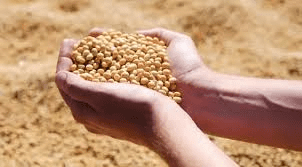
Handling at Wholesale and Retail Market
Wholesale and retail markets have been increasingly using automated ripening in which the gas composition of the ripening atmosphere, the room temperature and the fruit colour are continuously monitored and modulated to meet desired ripening characteristics.
Improved ripening systems will lead to greater use of ripening technology to deliver products that are ripened to the ideal eating stage.
Better refrigerated display units, with improved temperature and RH monitoring and control systems are being used in the retail markets especially for fresh cut fruits and vegetables.
Many retail and food service operators are using Hazard Analysis Critical Control Points (HACCP) programs to assure consumers that the food products are safe.
In summary, improvements are continually being made in attaining and maintaining the optimal environmental conditions (temperature, RH and concentrations of O2, CO2 and C2H4) in transport vehicles.
Produce is commonly cooled before loading and is loaded with an air space between the palletized produce and the walls of the transport vehicles to improve temperature maintenance.
In some cases vehicle and produce temperatures data are transmitted by satellite to control centre, allowing all the shipments to be continuously monitored.
Some new trucks have air ride suspension, which eliminate vibration damage. As the industry realizes the importance of air ride, its popularity will increase.
Equipment used for the transport of fresh produce includes Refrigerated and non-refrigerated vehicles – for highway transport.
Refrigerated and Non-refrigerated Vehicles
Refrigerated or non-refrigerated vehicles can be used for the bulk transportation of fresh produce. Non-refrigerated vehicles must provide sufficient cooling of the produce during transport.
The load should be covered with a white/light-coloured canvas to avoid overheating and to allow adequate air circulation throughout the produce.
Refrigerated vehicles/trailers must be properly insulated, have a high-capacity refrigeration unit and fan and an air-delivery duct.
The vehicle should be well insulated to maintain a cool environment for pre-cooled commodities and adequately ventilated to allow air movement through the produce.
Read Also : Guide to Waste Determination Process
Do you have any question, suggestion or other contributions? kindly use the comment box provided below for all your contributions. You are also encouraged to please kindly share this article with others you feel can benefit from this information if found useful enough as we may not be able to reach everyone at the same time. Thank you so much for sharing!

